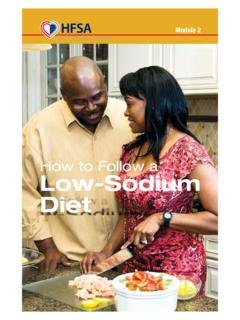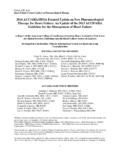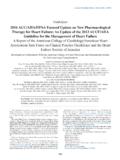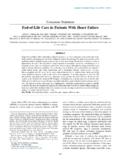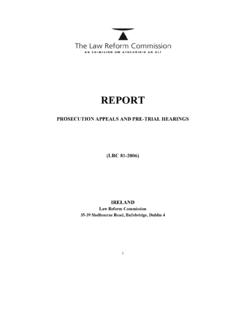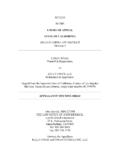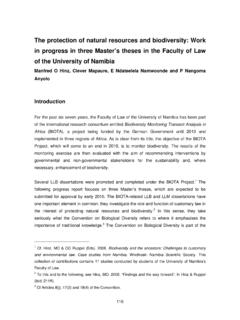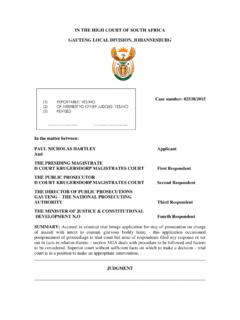Transcription of Acute Decompensated Heart Failure: Update on …
1 Consensus StatementAcute Decompensated Heart failure : Update on New andEmerging Evidence and Directions for Future ResearchMICHAEL M. GIVERTZ, MD,1 JOHN R. TEERLINK, MD,2 NANCY M. ALBERT, RN, PhD,3 CHERYL A. WESTLAKE CANARY, RN, PhD,5 SEAN P. COLLINS, MD, MSc,6 MONICA COLVIN-ADAMS, MD,7 JUSTIN A. EZEKOWITZ, MD,8 JAMES C. FANG, MD,9 ADRIAN F. HERNANDEZ, MD,10 STUART D. KATZ, MD,11 RAJAN KRISHNAMANI, MD,12 WENDY GATTIS STOUGH, PharmD,13 MARY N. WALSH, MD,14 JAVED BUTLER, MD,15 PETER E. CARSON, MD,16 JOHN P. DIMARCO, MD, PhD,17 RAY E. HERSHBERGER, MD,18 JOSEPH G.
2 ROGERS, MD,10 JOHN A. SPERTUS, MD, MPH,19 WILLIAM G. STEVENSON, MD,1 NANCY K. SWEITZER, MD, PhD, WILSON TANG, MD,4 AND RANDALL C. STARLING, MD, MPH4 Boston, Massachusetts; San Francisco, California; Cleveland, Ohio; Azusa, California; Nashville, Tennessee; Minneapolis, Minnesota; Edmonton, Alberta,Canada; Cleveland, Ohio; Durham, North Carolina; New York, New York; Middletown, Ohio; Buies Creek, North Carolina; Indianapolis, Indiana; Atlanta,Georgia; Washington, DC; Charlottesville, Virginia; Columbus, Ohio; Kansas City, Missouri; and Madison, WisconsinABSTRACTA cute Decompensated Heart failure (ADHF) is a complex clinical event associated with excess morbidityand mortality.
3 Managing ADHF patients is challenging because of the lack of effective treatments thatboth reduce symptoms and improve clinical outcomes. Existing guideline recommendations are largelybased on expert opinion, but several recently published trials have yielded important data to informboth current clinical practice and future research directions. New insight has been gained regarding vol-ume management, including dosing strategies for intravenous loop diuretics and the role of ultrafiltrationin patients with Heart failure and renal dysfunction. Although the largest ADHF trial to date (ASCEND-HF, using nesiritide) was neutral, promising results with other investigational agents have been reported.
4 Ifthese findings are confirmed in phase III trials, novel compounds, such as relaxin, omecamtiv mecarbil,and ularitide, among others, may become therapeutic options. Translation of research findings into qualityclinical care can not be overemphasized. Although many gaps in knowledge exist, ongoing studies willaddress issues around delivery of evidence-based care to achieve the goal of improving the health statusand clinical outcomes of patients with ADHF. (J Cardiac Fail 2013;19:371e389)Key Words: Heart failure , clinical trials, diuretics, vasodilators, biomarkers, quality of care, the1 Cardiovascular Division, Brigham and Women s Hospital,Harvard Medical School, Boston, Massachusetts;2 Department ofMedicine, University of California San Francisco, San Francisco, Califor-nia;3 Heart and Vascular Institute, Cleveland Clinic, Cleveland, Ohio;4 Department of Cardiovascular Medicine, Cleveland Clinic, Cleveland,Ohio;5 School of Nursing, Azusa Pacific University, Azusa, California.
5 6 Department of Emergency Medicine, Vanderbilt University, Nashville,Tennessee;7 Cardiovascular Division, University of Minnesota, Minneap-olis, Minnesota;8 Division of Cardiology, University of Alberta,Edmonton, Alberta, Canada;9 Division of Cardiovascular Medicine,Harrington Heart and Vascular Institute, University Hospitals CaseMedical Center, Cleveland, Ohio;10 Division of Cardiology, Departmentof Medicine, Duke University Medical Center, Durham, North Carolina;11 Leon H. Charney Division of Cardiology, New York University Schoolof Medicine, New York, New York;12 Advanced Cardiovascular Institute,Middletown, Ohio;13 DepartmentofClinicalResearch,CampbellUni -versity College of Pharmacy and Health Sciences, Buies Creek, NorthCarolina;14 The Care Group, Indianapolis, Indiana;15 Division of Car-diology, Department of Medicine, Emory University, Atlanta, Georgia;16 Georgetown University and Washington DC Veterans Affairs MedicalCenter, Washington, DC;17 University of Virginia Health System, Char-lottesville, Virginia.
6 18 Ohio State University, Columbus, Ohio; s Mid America Heart Institute, University of MissourieKansasCity, Kansas City, Missouri and20 Department of Medicine, Universityof Wisconsin, Madison, receivedApril16, 2013; revised manuscript accepted April 17, requests: Michael M. Givertz, MD, Cardiovascular Division,Brigham and Women s Hospital, 75 Francis Street, Boston, MA : 617-732-7367; Fax: 617-264-5265. paper was reviewed and approved on March 19, 2013 by the HeartFailure Society of America Executive Council, whose members are listedin the page 384 for disclosure $ - see front matter 2013 Elsevier Inc.
7 All rights of Cardiac failure Vol. 19 No. 6 2013 Heart failure is a complex syndrome that involves bothacute and chronic processes. Acute Heart failure has variouspresentations. It can be characterized by rapidly developingsymptoms of new-onset or de novo Heart failure , or it can bea gradual worsening of chronic Heart failure culminating inacute Decompensated Heart failure (ADHF), sometimes re-ferred to as Acute on chronic Heart failure . Many differ-ent terms have been used in the literature to describe thissyndrome, including Acute Heart failure , Acute Heart failuresyndromes, and latter term will be used forthis ongoing and intense efforts, clinical trials havenot yielded therapeutic strategies that improve outcomesin the ADHF population.
8 Many factors may contribute toinadequate trial results, including the heterogeneity of thecondition, the likelihood that multiple triggers or patho-physiologic processes exist and differ among individualpatients, the timing of patient enrollment, and inherentchallenges such as obtaining informed consent and con-ducting clinical trials in patients who are acutely symptom-atic and may have high adverse event rates. As a result,there are limited data to guide patient management. Ofthe 44 recommendations relevant to ADHF in the 2010 Heart failure Society of America (HFSA) Heart failureguidelines, 3 were supported by strength of evidence A, 8by strength of evidence B, and 33 by strength of , in the American College of Cardiology/American Heart Association 2009 Heart failure guidelines,only 1 of 25 recommendations related to ADHF was a classI, level of evidence A the paucity of evidence, practicing clinicians rou-tinely seek guidance on the management of patients withADHF.
9 Since the publication of the 2010 HFSA Heart failureguidelines, several trials in ADHF have yielded new data. Al-though these studies advance knowledge and inform clinicaldecision making, their results do not warrant a complete revi-sion of the guidelines. The purpose of the present paper is toreview new data generated in the broad ADHF population in-volving therapeutic drugs or strategies, biomarkers, and qual-ity of care initiatives. This paper also highlights gaps in thecurrent evidence base for the diagnosis, prognosis, risk strati-fication, management and monitoring of ADHF.
10 Future re-search efforts should focus on these high-priority areas ofunmet needs. This paper does not address the managementof Heart failure in the setting of shock, specific precipitants(eg, Acute myocardial infarction or atrial fibrillation), earlymanagement with bilevel positive airway pressure, or otheragents not approved for use in the United States (eg, levosi-mendan). Readers interested in these topics should refer tothe 2010 HFSA guidelines for further than 1 million hospitalizations for Heart failureoccur annually in the ,5 Heart failure remains a pri-mary cause of hospitalization among older Americans.
